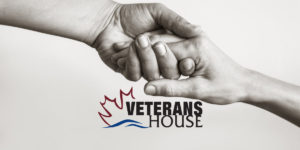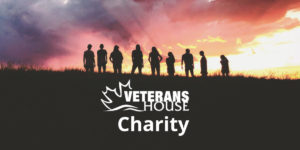If we are told to take a prescription for our health we do it without question, but for some reason when we are told to change our diet for our health we readily admit even if we try it, the change won’t last. What if we stopped looking at our brain injuries as Mental Illness and instead looked at them as open soft tissue injuries. I’m willing to bet if you were bleeding all over the room, you would apply a bandage and make accommodations for your injury. Time for you to do the same for your brain.
Step One: Increase Your Good Healthy Fats.
The brain eats fat, not carbohydrates and sugar. In fact the brain prefers a high fat low carbohydrate diet and recent health studies are showing our low fat diets are killing us. Although starches and sugars give a quick stimulus, they also create fatigue. The short rapid highs are followed by deep depressing lows and thus the cycle of needing the next quick fix begins. With every sleepless night and tiring day comes a greater need for the sugars, starches and stimulants. Truth is it’s a very destructive path. Couple the lows with the anxiety and depression associated with mental health issues and in my opinion it is a recipe for self destruction. The best thing you can do for yourself if you are a victim of mental health, in particular Post Traumatic Stress Injuries (PTSD) or Operational Stress injuries (OSI’s) is not compensate for fatigue and sleeplessness with poor diet and stimulants. The very first dietary change we should make is to increase our good fat intake and not consume any starches or sugars or as little as possible.
Step Two: Stop Eating Starch and Sugar.
When the brain is exhausted and/or starving from not enough fats (both result in the same reaction) it searches for any food that will help it to stay alert the quickest but not necessarily healthiest way possible. Caffeine, Sugar and Starches (which are easily and quickly converted to sugar), become the food the stressed individual craves. Hence the nickname comfort food I suspect. This Double Edged Sword is why diet change rarely works, most people skip step one and try to execute only step two without or with little accountability and understanding. An added component is that processed food no matter how healthy it says it is, is much higher in starches and sugars. Diet or Healthy Choice meal plans are exceptionally bad as they limit calories instead of switching calories from Starch and Sugar base to Fat Base.
Step Three: Accountability (Where is your Fire Team Partner?)
Who is holding you to accountability? Who is that one person who will keep you honest with yourself and focused on your goals. With soft tissue trauma, we have Doctors, Nurses, and Physiotherapists etc., that advise and keep us on the right track for rapid recovery and healing. They follow up and are not afraid to tell us off when we don’t follow what is in our best interest. Unfortunately Dietitians and Mental Health Professionals are bound to the Canada Food Guide and encourage unneeded starches and sugars. To break with the Canada Food Guide can cost them their licences. This is slowly changing as brain specialists and even cancer and cardiac specialists have changed their tune with what is a healthy diet.
Here is a question to ask yourself. What mechanisms do you have in place to hold yourself accountable? When you are Grocery Shopping, what will keep you from buying what you shouldn’t be eating? Are you using a meal plan that forces you to buy only fresh vegetables? Do you have proper snack food high in natural balanced fats available like nuts, and avocados? And no fruit is not a healthy snack food neither are fruit juices. They are added sugar. This doesn’t mean you don’t eat fruit, it means you have a serving of fruit and have it at the beginning of your day so you aren’t getting a spike of sugar in the late afternoon or evening.
Strategies:
This is a great site for planning purposes. Enter the food you plan on eating and hit enter. Scroll down and you will find a list of preparation styles, choose the one closest to your food preparation. It will outline the nutritional value based on the unit measure you select and also give you a breakdown on the amount of starch, sugar and fats. Including the type of sugar and fat, as well as the number of calories from starch and from fat. Also included is an overall nutrition score and a Glycemic Load Score. The Glycemic Load score is very important. This tells you how much of a load of sugar you are adding to your body from this particular food in the manor you are preparing it.
In order to feed your brain and not your mental illness, work on getting your total Glycemic Load for the day under 10, and the bulk of that load as early in the day as possible. Increase your fats to 40% of your diet, yes I know you have been told to have low cholesterol, but this is a misnomer. What you need is to have your Low Density Lipoprotein (LDL) at 1/4 to 1/3 of your High Density Lipoprotein (LDL). What that means for most people is to lower your LDL, not your total cholesterol. Remember your brain eats fat and Cholesterol is fat with a protein attached to it. If your fat is imbalanced the LDL sticks to the walls of your arteries along with any HDL it is carrying with it and it never reaches the brain. Refer to the Step One paragraph as to the result. Balanced fat feeds the brain and increases emotional and rational control. It really is as simple as that. No rocket science, just plain old fashion food selection and preparation. If you want to feed your brain, stop eating out, stop eating prepackaged food and start eating as if it was your doctor prescribing a medication.
Quick Glycemic Load Reference Based on 1 Severing (RAW)
Broccoli 2
Cabbage 17
Celery 1
Cauliflower 2
Green Beans 3
Mushrooms 2
Spinach 0
Tomatoes 1.5
Carrots 1
Plums 1.7
Broth 0
Olives 0
Eggs 0
Apples 3
Cucumber 1
Zucchini 0
Squash 8
Shrimp 0
Lobster 2
Avocados 0
Onion 4
Orange 4
Banana 10
Eggplant 1
Beet Greens 0
Lettuce 0
Peas 8
Brussel Sprouts 3
Safe Fats
Meat fats
Cold Press Olive Oil
Coconut oil
Avocado Oil
Lard
Butter
Ghee
(Cook at low temp)
Bad Fats
Vegetable oil
Margarine (all)
Deep fried fats
Canola
Starches
Bread (all)
Potatoes
Crackers
Pasta
Spaghetti
Cereal
Rice
Oatmeal
Cookies
Muffins
Quinoa
Pancakes
Sugars
There are no safe sugars or safe substitute sugars. The “Diet Sugars” are worse than white sugar for weight gain as they bind as fat in your bloodstream. If you must use a sweetener use a small amount of real maple syrup or a small amount of Natural Honey only.
Strategy
Eat as much good fat as you can. It is balanced and will not increase your bad cholesterol, but in fact will lower it.
Do not eat prepackaged food (anything in a box, a can or a jar as it contains all the foods you can’t afford to eat.) If you don’t believe me read the label.




